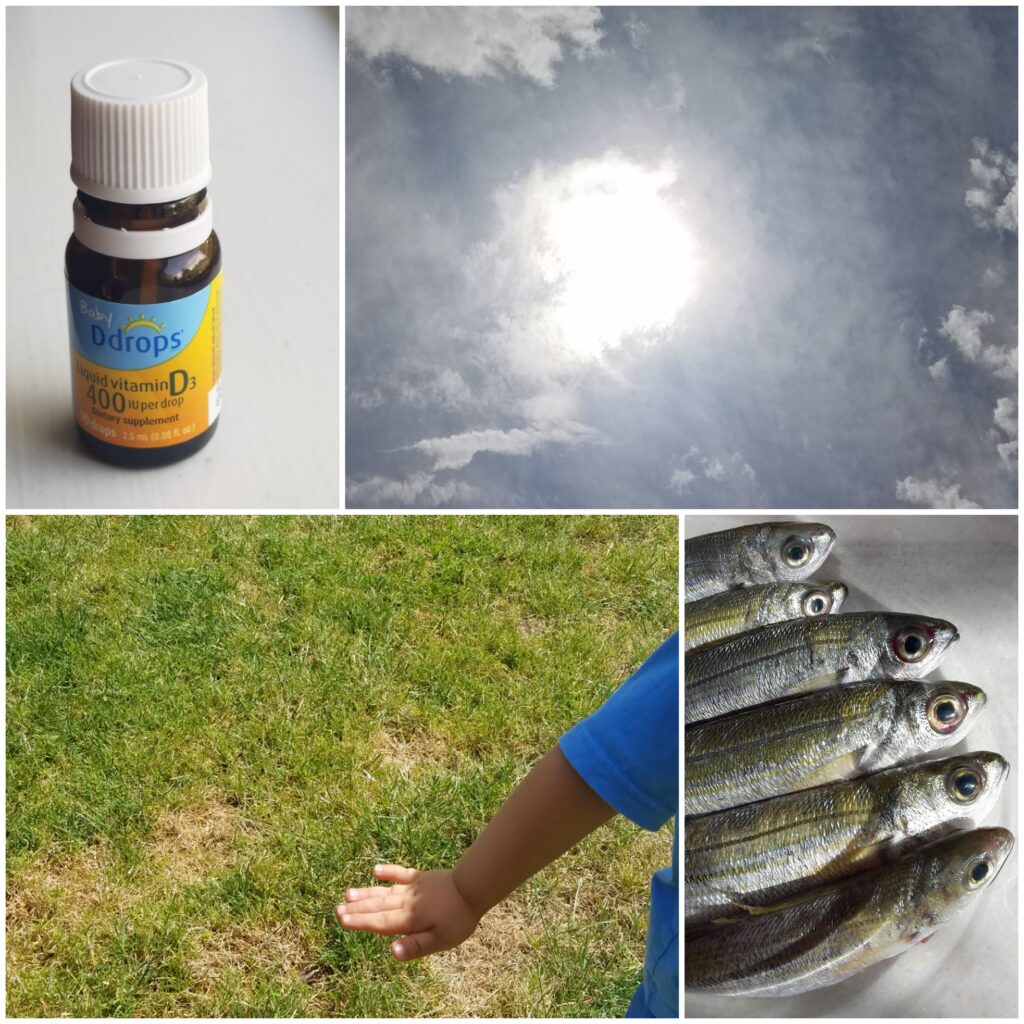Vitamin D, the “sunshine vitamin” is a fat-soluble vitamin that is needed by children and adults for growth and good health. It is well known for its essential role in bone formation and maintenance, by helping our body take in the calcium and phosphorus from our diet. Without vitamin D, only 10–15% of dietary calcium and about 60% of phosphorus are absorbed.
However, its action is not limited to skeletal health. Vitamin D, in its active form 1,25(OH)2D, is a hormone that binds and regulates gene expression in more than 200 genes found in a variety of tissues in our body. It is like a key that unlocks many locks! Ongoing research suggests that vitamin D may play a role in cancer, diabetes, hypertension, cardiovascular, and autoimmune and dermatological diseases and respiratory infections.
Now with COVID19, the spotlight falls on its effect in protecting against respiratory infections. Vitamin D has been shown to decrease inflammation by inhibiting proinflammatory cytokine release by the immune system. Its possible role in decreasing inflammation and the “cytokine storm” leading to pneumonia in patients with COVID19 is being investigated. Also, it has been shown to protect us against bacteria and viruses by increasing the production of the antimicrobial peptides (cathelicidins and defensins) in the respiratory cells, and to interact with the renin-angotensin system and how viruses enter our cells. As discussed in the recent review published in the journal Nutrients, “Evidence supporting the role of vitamin D in reducing risk of COVID-19 includes that the outbreak occurred in winter, a time when 25-hydroxyvitamin D (25(OH)D) concentrations are lowest; that the number of cases in the Southern Hemisphere near the end of summer are low; that vitamin D deficiency has been found to contribute to acute respiratory distress syndrome; and that case-fatality rates increase with age and with chronic disease comorbidity, both of which are associated with lower 25(OH)D concentration”.
Although more research is needed into whether low VitD levels are a cause or a consequence of disease, a large meta-analysis published in the British Medical Journal in 2017 has greatly supported its role in protecting against respiratory infections. They analyzed data from 11,321 participants 0-95 years of age and concluded that Vitamin D supplementation resulted in a statistically significant reduction in the proportion of participants experiencing at least one acute respiratory tract infection, which may prove to be the case with COVID19. The protective effect was seen in those getting daily or weekly dose and was more pronounced in those with lower baseline levels. Consequently, although more clinical trials are needed to assess the effect of VitD in Covid19, it is safe to say that optimizing our VitD levels can only be beneficial to our overall health and may protect against this and other infections and diseases.
What are its main sources? How can I know whether I have enough?
The fact is that 50% of the population worldwide has VitD insufficiency. Vit D is also called the “sunshine vitamin” for the simple reason that it is made in the skin by the action of the sun’s UVB rays and then it is activated in the liver and kidneys. We can make enough of it by exposing our skin to the sun without sunscreen for 15-30min, between 10am and 3pm, during the months of April to end of October at this latitude. Dark skin, older age, latitude, application of sunscreen, being mostly indoors are factors limiting its production. The only way to know if we have enough is through a 25OHVitD blood test.
Apart from our primary source, the sun, there are only a few good food sources of VitD. Even breastmilk, the most complete form of nutrition, does not contain enough VitD and it is recommended to supplement babies that are exclusively breastfeeding with 400IU daily (formula milk is fortified). Good food sources are: fatty fish, fortified milk, mushrooms exposed to UV light and fortified cereal. One serving 3oz of fatty fish eg salmon provides about 240-400IU and 2 cups of fortified milk 240IU and these are the richest sources.
The recommended dietary allowance (RDA) for children and adults 1 to 70 years of age is 600IU (15μg) a day. This makes it hard to reach our requirements through our diet only.
The third source of VitD is supplements. They should be considered at individual basis when the production or intake from the other sources is not enough to cover our needs. The American academy of pediatrics recommends “Children who are ingesting <1000 mL/day of vitamin D–fortified formula or milk, should receive a vitamin D supplement of 400 IU/day (10μg). It does not recommend increasing sun exposure without sunscreen due to its association with increased risk of skin cancer. Adults can safely take supplements of 600IU to 2000IU (the upper tolerable limit for adults being 4000IU) depending on age and other factors. If you are interested in assessing your diet and how much you need consult your dietitian or general practitioner. In case of deficiency, therapeutic doses will be recommended.
VitD is important for our skeletal health, our immune system and may help prevent a variety of diseases. It is involved in the regulation of more than 200 genes. We need to make sure that all members of our family have enough through sun, food and/or supplements. Let it be another of our shields against disease and COVID19.
SOURCES
Vitamin-D and COVID-19: do deficient risk a poorer outcome? Fiona Mitchell. The Lancet. May 20, 2020DOI:https://doi.org/10.1016/S2213-8587(20)30183-2
Evidence That Vitamin D Supplementation Could Reduce Risk of Influenza and COVID-19 Infections and Deaths. William B Grant et al. Nutrients. 2020 Apr 2;12(4):988. doi: 10.3390/nu12040988.
Review Nonclassic actions of vitamin D. Bikle D. J Clin Endocrinol Metab. 2009 Jan; 94(1):26-34.
Nair R, Maseeh A. Vitamin D: The “sunshine” vitamin. J Pharmacol Pharmacother. 2012 Apr;3(2):118-26.
D A Hughes and R Norton. Vitamin D and respiratory health. Clin Exp Immunol. 2009 Oct; 158(1): 20–25.






